 To enhance service speed and avoid tariff delays, we've opened a US warehouse. All US orders ship directly from our US facility.
To enhance service speed and avoid tariff delays, we've opened a US warehouse. All US orders ship directly from our US facility.
| Cat. No. | Product Name | Field of Application | Chemical Structure |
|---|---|---|---|
| DC70497 | HTT-D3 Featured |
HTT-D3 is a potent, CNS-penetrant, orally bioavailable huntingtin (HTT) splicing modulator, affects HTT pre-mRNA splicing and reduces HTT expression with IC50 of 8 nM.Oral administration of HTT-D3 resulted in dose-dependent and approximately equivalent mHTT protein lowering in both brain and peripheral tissues in mouse models carrying human mHTT transgene, BACHD and Hu97/18.HTT-D3 (10 mg/kg) reduced mHTT mRNA and protein levels in BACHD brain in BACHD mice.
More description
|

|
| DC20028 | Benznidazole (Synonyms: Benznidazol; Ro 07-1051; Ro 71051) Featured |
Benznidazole (Ro 07-1051) is an antiparasitic medication, with an IC50 of 20.35 μM for Colombian T. cruzi strains, and has been used in the treatment of Chagas disease.
More description
|

|
| A617 | GBR-900 Featured |

|
|
| DC60251 | CO23 Featured |
CO23 is a selective thyroid hormone receptor (TR) α agonist and used for growth and development regulation. CO23 was able to be transported through the blood-brain barrier.
CO23 (ip; 0.04-5.0 nmol/g) has ≈50% cholesterol reduction with 0.8 nmol/g dose and higher doses are equally effective. CO23 has no effect at the lowest dose of 0.04 nmol/g and increases Dio1 mRNA 5-, 10-, and 15-fold at the doses of 0.8, 2.5, and 5 nmol/g, respectively.
More description
|
.png)
|
| DC74583 | ZK53 Featured |
ZK53 is a selective activator of mitochondrial caseinolytic protease P (HsClpP). It exhibits an EC50 of 1.37 μM for α-casein hydrolysis by HsClpP. ZK53 treatment allosterically activates HsClpP to uncontrollably degrade the essential mitochondrial proteins and is inactive toward bacterial ClpP proteins.
More description
|
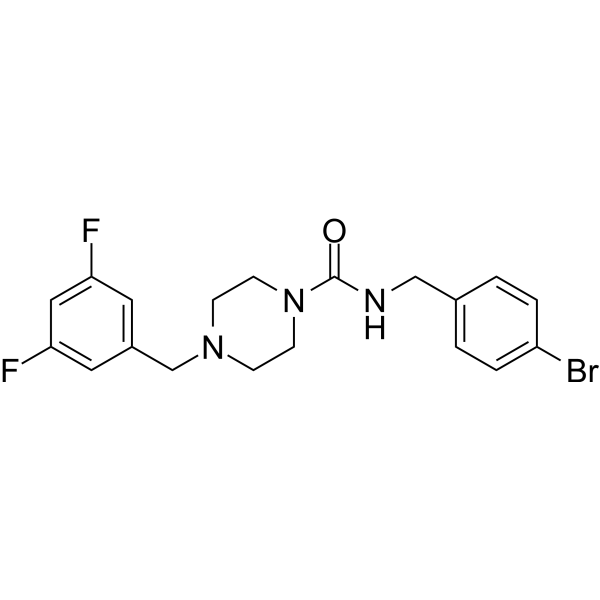
|
| DC67108 | CMP-5 HCl Featured |
CMP-5 HClis a potent, specific, and selective PRMT5 inhibitor, while displays no activity against PRMT1, PRMT4, and PRMT7 enzymes. CMP-5 dihydrochloride selectively blocks S2Me-H4R3 by inhibiting PRMT5 methyltransferase activity on histone preparations. CMP-5 dihydrochloride prevents EBV-driven B-lymphocyte transformation but leaving normal B cells unaffected.
More description
|
.gif)
|
| DC67107 | cmp2 Featured |
cmp2 is a selective TRPC6 activator suitable for treatment of synaptic deficiency in Alzheimer’s disease hippocampal neurons,Cmp2 selectively activates TRPC6 but not structurally related TRPC3 and TRPC7. Cmp2 exhibits synaptoprotective properties in culture and slices and penetrates the BBB. In vivo study indicated cmp2 (10 mg/kg I.P.) reversed deficits in synaptic plasticity in the 5xFAD mice.
More description
|
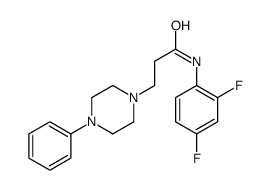
|
| DCC5343 | Unipr500 Featured |
Novel Eph antagonist, inhibiting Eph/ephrin interactions, enhancing glucose-stimulated insulin secretion (GSIS), and acting as a hypoglycemic agent
More description
|

|
| DC70934 | ZH97 Featured |
ZH97 is a selective and covalent small-molecule inhibitor of BFL-1 protein with binding Ki of 0.41 uM, >200-fold selectivity over MCL-1.ZH97 does not bind to BCL-xL, BCL-2, TEAD2, TEAD4, MDM2, MDMX, BRD2 BD1, BRD2 BD2, BRD3 BD1, BRD3 BD2, BCL9, PD1/PD-L1 (Ki>400 uM).ZH97 modifies BFL-1 at the C55 residue, blocks BFL-1/BID interaction in vitro.ZH97 dose-dependently increased cytoplasmic cytochrome c level in U937 cells, has cell growth inhibition with IC50 of 2.8 uM, 5.5 uM, 7.7 uM, 6.8 uM, and 3.9 uM in U937, Kasumi-1, K562, MM.1S, and MV4-11 cell lines, respectively.ZH97 inhibits BFL-1/PUMA interaction in cell lysate and is effective in cancer cells that harboring highexpression level of BFL-1.
More description
|

|
| DCC2512 | Hdl376 Featured |
HDL376 is a scavenger receptor class B type I (SR-BI) inhibitor. HDL376 directly inhibits SR-BI-mediated lipid transport in cells and in liposomes reconstituted with purified SR-BI (IC50 = 0.22 μM). HDL376 can be used for the research of atherosclerotic coronary artery disease.
More description
|
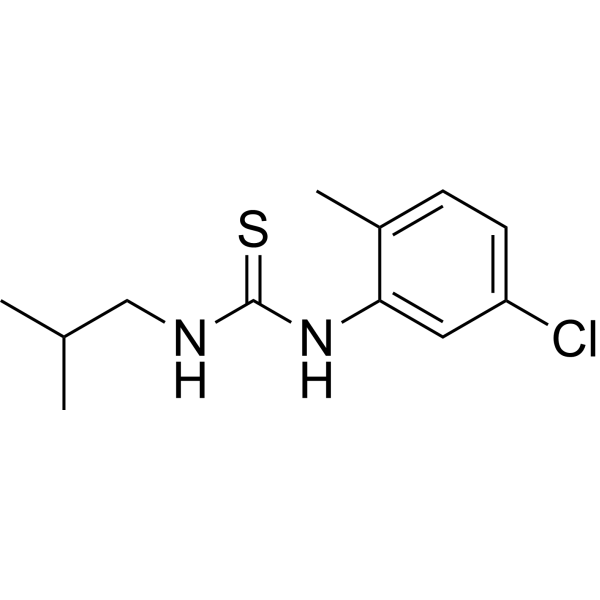
|
| DC7552 | PTC-028 Featured |
PTC-028 is an orally bioavailable compound that decreases BMI-1 levels by posttranslational modification
More description
|

|
| DC67106 | BML-286 (Compound 3289-8625) Featured |
BML-286 (Compound 3289-8625) is a small molecule inhibitor of the PDZ domain of dishevelled (Dvl) with KD of 10.6 uM, competitively inhibits the Wnt signaling.
Compound 3289-8625 (3 uM) inhibits Wnt signaling, effectively reduces luciferase activity by about 2-fold 293 cell line stably transfected with a luciferase reporter.
Compound 3289-8625 is cell-permeable and 3289-8625 (10 uM) blocks Wnt signaling in Xenopus, inhibits Wnt pathway responses in culture and in vivo.
Compound 3289-8625 suppresses cell proliferation and reduces β-catenin level in prostate cancer PC-3 cells, decreases the levels of β-catenin in both cytosolic fraction and membrane fraction.
Compound 3289-8625 sensitized A2780/Taxol cells to paclitaxel.
More description
|

|
| DCC0844 | Azd1897 Featured |
AZD1897 is a PIM1, PIM2, and PIM3 inhibitor with IC50 values of less than 3 nM for these three PIM kinases. AZD1897 exhibits anticancer activity and synergistically inhibits the activity of acute myeloid leukemia (AML) cells in combination with Capivasertib (HY-15431). This synergistic inhibitory effect is achieved through the inhibition of the mTOR and MCL1 pathways.
More description
|
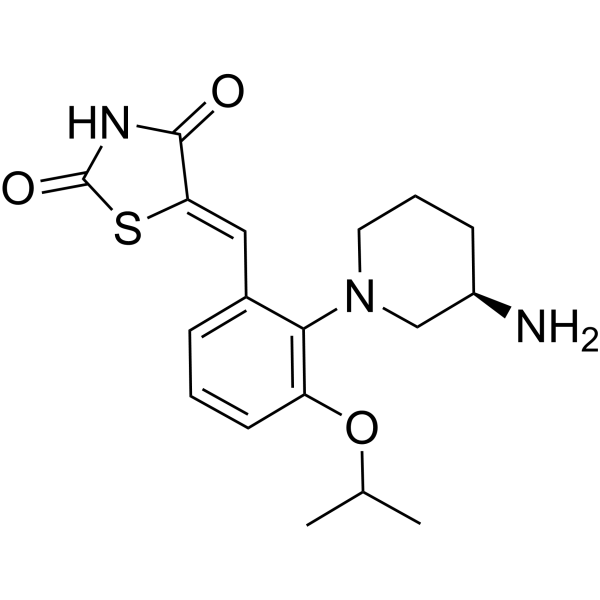
|
| DC24204 | EN6 Featured |
EN6 is a small-molecule in vivo activator of autophagy that covalently targets cysteine 277 in the ATP6V1A subunit of the lysosomal v-ATPase, which activates mTORC1 via the Rag guanosine triphosphatases.
More description
|

|
| DC67105 | VCPIP1-IN-1 Featured |
VCPIP1-IN-1 (Compound 001) is a VCPIP1 inhibitor, with an IC50 of 0.41 μM.
More description
|
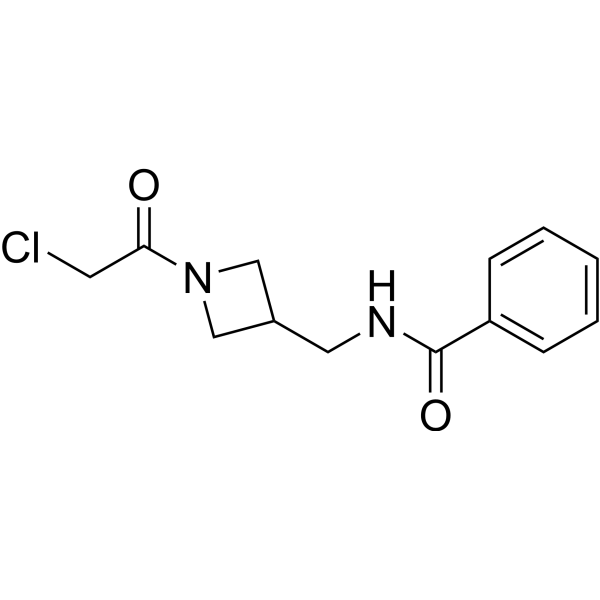
|
| DC43801 | ML019 (SID 7969543) Featured |
SID 7969543 is a selective SF-1 (steroidogenic factor 1, NR5A1) inhibitor with an IC50 of 760 nM. SID 7969543 inhibits SF-1-triggered luciferase expression with IC50 of 30 nM. SF-1 is a transcription factor belonging to the nuclear receptor superfamily.
More description
|
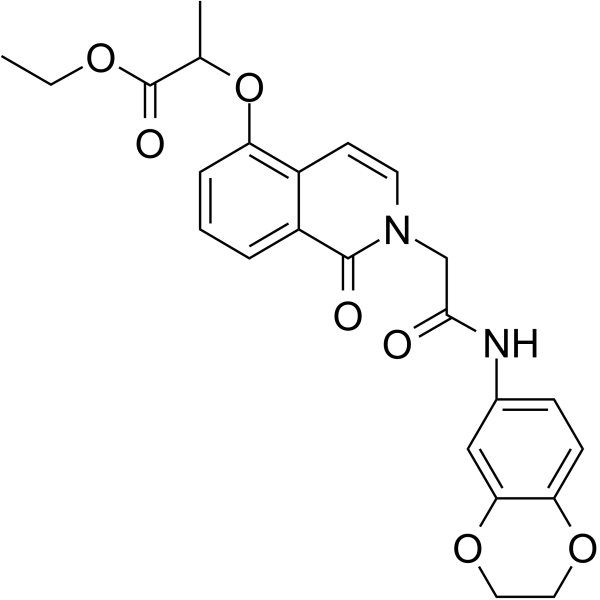
|
| DC67104 | DCP-LA(FR 236924) Featured |
DCP-LA (FR236924), a linoleic acid derivative, selectively and directly activates PKCε. DCP-LA activates Ca(2+)/calmodulin-dependent protein kinase II (CaMKII) and inhibits protein phosphatase-1 (PP-1) to stimulate AMPA receptor exocytosis. DCP-LA inhibits activation of caspase-3/-9 and protects neurons at least in part from oxidative stress-induced apoptosis.
More description
|
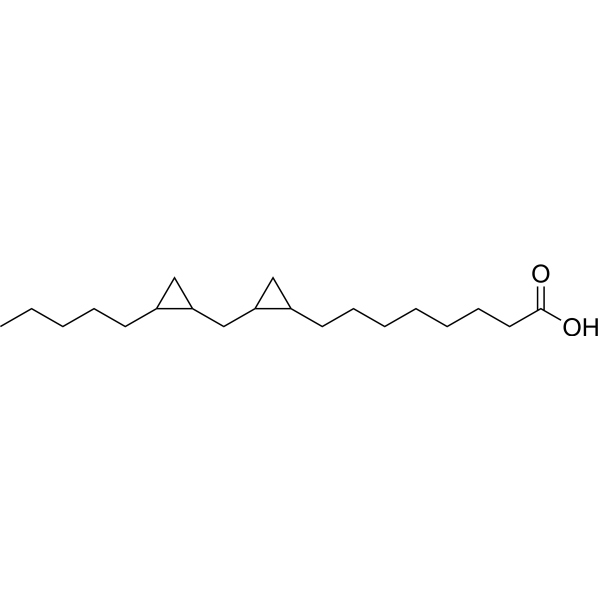
|
| DC67103 | Nerandomilast dihydrate Featured |
Nerandomilast (BI 1015550) dihydrate is an orally active inhibitor of PDE4B with an IC50 value of 7.2 nM. Nerandomilast (dihydrate) has good safety and potential applications in inflammation, allergic diseases, pulmonary fibrosis, and chronic obstructive pulmonary disease (COPD).
More description
|
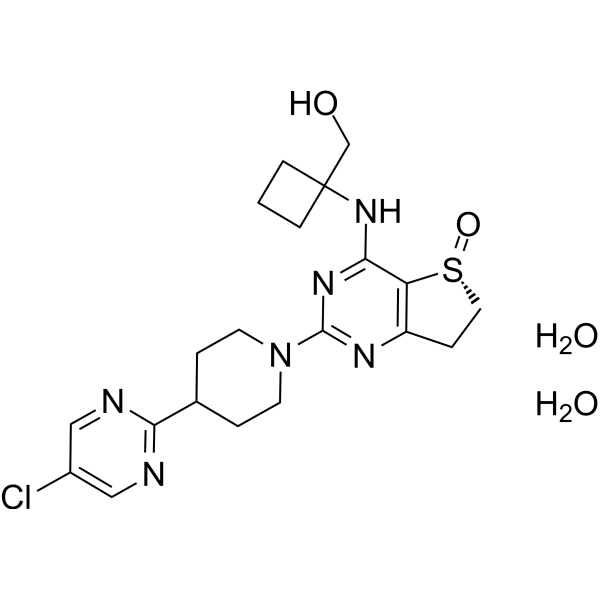
|
| DC65323 | Nerandomilast (Synonyms: BI 1015550) Featured |
Nerandomilast (BI 1015550) is an orally active inhibitor of PDE4B with an IC50 value of 7.2 nM. Nerandomilast has good safety and potential applications in inflammation, allergic diseases, pulmonary fibrosis, and chronic obstructive pulmonary disease (COPD).
More description
|
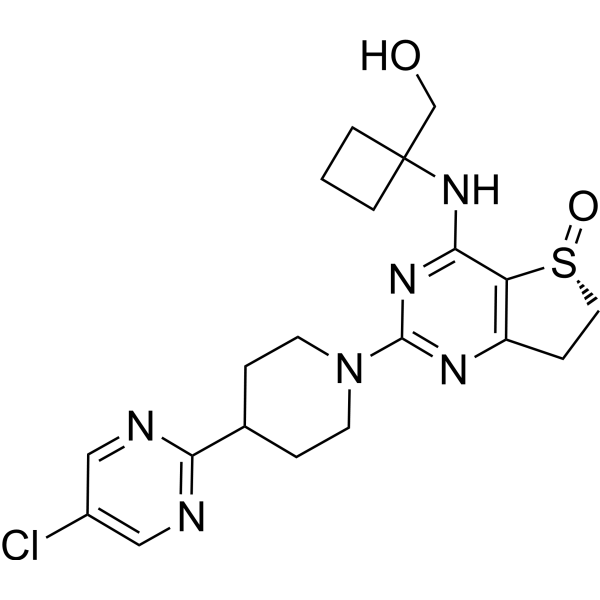
|
| DC48215 | Zagociguat Featured |
Zagociguat is the stimulator of soluble guanylate cyclase. Zagociguat increases nitric oxide (NO) signaling leading to an increase in cyclic guanosine monophosphate production. Zagociguat has the potential for the research of noncentral nervous system (CNS) disorders.
More description
|

|
| DC8772 | Isradipine Featured |
Isradipine(Dynacirc) is a calcium channel blocker with an IC50 of 34±8 μM.
More description
|
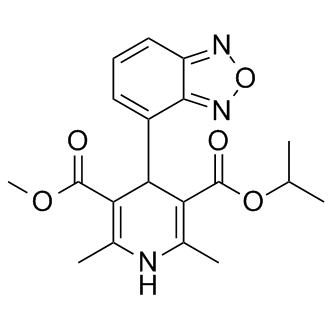
|
| DC44076 | MAGL-IN-1 Featured |
MAGL-IN-1 is a potent, selective, reversible and competitive inhibitor of MAGL, with an IC50 of 80 nM. MAGL-IN-1 exhibits anti-proliferative effects against human breast, colorectal, and ovarian cancer cells. MAGL-IN-1 blocks MAGL in cell-based as well as in vivo assays.
More description
|

|
| DC67102 | D-Glucose-¹³C6 Featured |
D-Glucose-13C6 is a stable isotope-labeled counterpart of D-glucose (HY-B0389). D-Glucose-13C6 can be used as a metabolic tracer to trace glucose-related synthetic catabolism or as synthesis ingredient, minimal media reagent, and internal standard.
More description
|
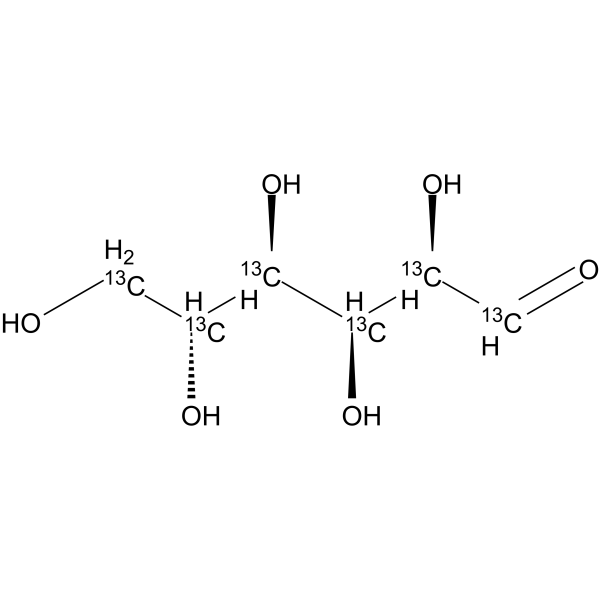
|
| DC73160 | MW01 Featured |
MW01 is a specific inhibitor for DNA damage-induced NF-κB activity, inhibits CLK2 and CLK4 with IC50 of 360 and 14.1 nM, does not inhibit CLK3.
More description
|
.png)
|
| DC71928 | MTB-9655 Featured |
MTB-9655 is a novel, potent and selective Acetyl-Coenzyme A Synthetase 2 (ACSS2) inhibitor, which is currently in Phase I clinical investigation on patients with tumors with high levels of ACSS2.
More description
|
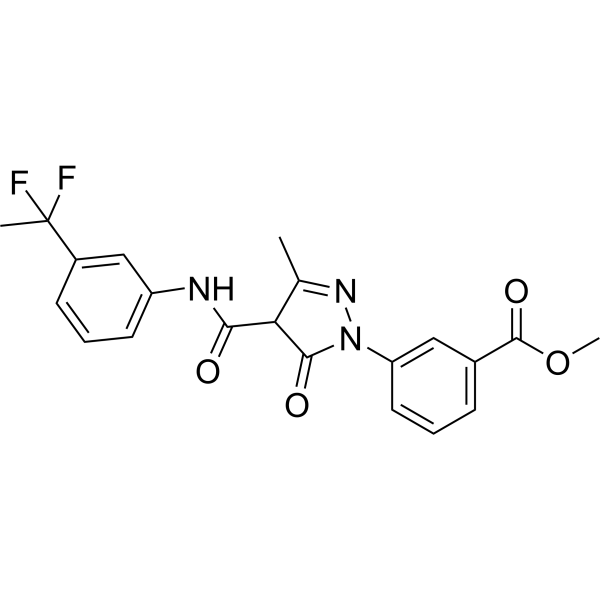
|
| DC73882 | (S)-CKi-1 Featured |
(S)-CKi-1 is a selective, covalent inhibitor of creatine kinases (CKs), inhibits recombinant creatine kinase B (CKB) phosphotransfer activity with IC50 of 0.6 uM, depletes creatine phosphagen energetics in cells.
More description
|
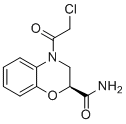
|
| DC20975 | DS-2330 Featured |
DS-2330 is a phosphorous lowering agent for treating hyperphosphatemia in chronic kidney disease..
More description
|

|
| DC31556 | Balsalazide Disodium Featured |
Balsalazide Disodium is the disodium salt form of balsalazide, an aminosalicylate and oral prodrug that is enzymatically cleaved in the colon to produce the anti-inflammatory agent mesalazine. Mesalazine acts locally on the mucosa of the colon where it diminishes inflammation by blocking the production of arachidonic acid metabolites and other inflammatory agents. Balsalazide disodium is used to treat chronic inflammatory bowel disease.
More description
|
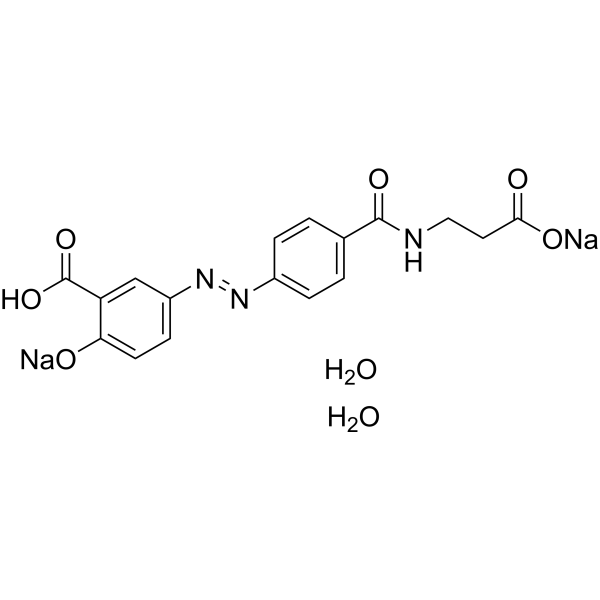
|
| DC33156 | MitoPQ Featured |
MitoPQ, also known as MitoParaquat, is a redox cycler. MitoParaquat (MitoPQ) that comprises a triphenylphosphonium lipophilic cation conjugated to the redox cycler paraquat. MitoPQ accumulates selectively in the mitochondrial matrix driven by the membrane potential. Within the matrix, MitoPQ produces superoxide by redox cycling at the flavin site of complex I, selectively increasing superoxide production within mitochondria. MitoPQ increased mitochondrial superoxide in isolated mitochondria and cells in culture ~a thousand-fold more effectively than untargeted paraquat. MitoPQ was also more toxic than paraquat in the isolated perfused heart and in Drosophila in vivo. MitoPQ enables the selective generation of superoxide within mitochondria and is a useful tool to investigate the many roles of mitochondrial superoxide in pathology and redox signaling in cells and in vivo.
More description
|
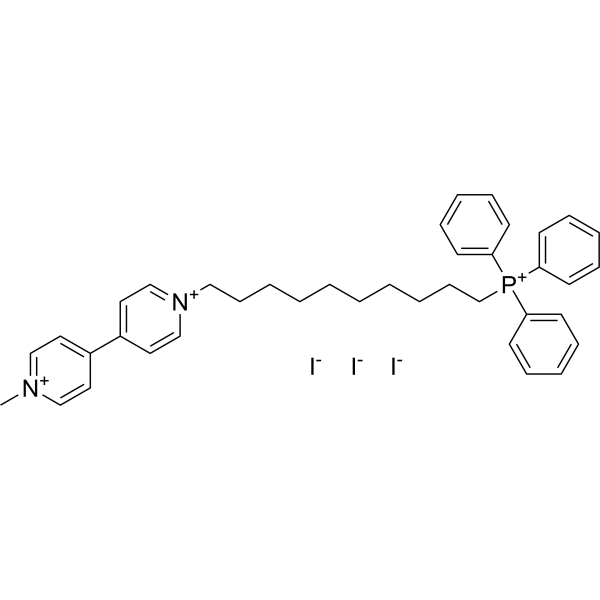
|
| A451 | Novartis patent anti-CD45 Featured |

|